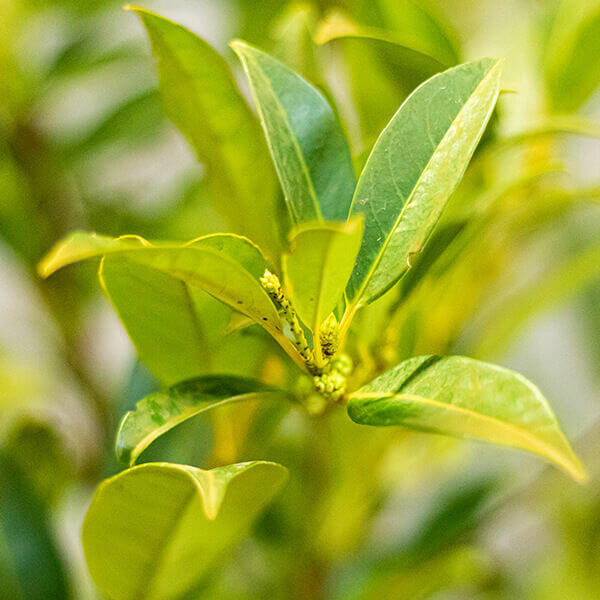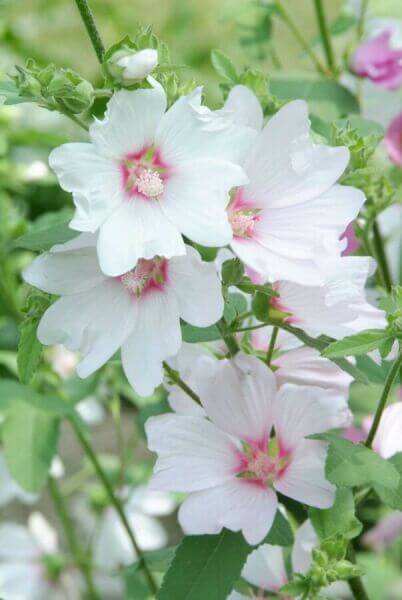Best Hedging Plants For Fast Growth
Best Hedging Plants For Fast Growth
Blog Article
Hedge Plants For All-round Interest
Enhance your garden's allure with lavish hedge varieties such as Yew (Taxus), Thuja, Laurel, Photinia, and Bamboo, celebrated for their structural stability and environmental advantages.
Yew and Thuja provide evergreen protection and winter season durability, while Laurel uses rapid development and broad, aromatic leaves.
Photinia adds seasonal charm with its lively red foliage, and Bamboo lends a low-maintenance, peaceful atmosphere.
These hedges improve air quality, minimize sound, and create tranquil, private areas.
Correct planting, spacing, and maintenance ensure energetic growth and eco-friendly consistency.
Explore how these lavish ranges can raise your garden's appeal and wellness.
Key Takeaways
Transform Your Garden With Lush Hedge Varieties
- Select Yew for its thick, evergreen development and unparalleled longevity.
- Select Laurel for its quick development and broad leaves, ensuring quick privacy.
- Select Photinia for its vibrant seasonal foliage, which turns a striking dark red.
- Utilize Bamboo for a low-maintenance, winter-hardy hedge with aesthetic appeal.
- Space plants 2-3 per meter and prune frequently for ideal growth and health.
Popular Hedge Plants
When changing a garden with rich hedge ranges, it's important to consider popular hedge plants such as Yew, Thuja, Laurel, and Photinia due to their distinct qualities and benefits.
Yew (Taxus) is highly esteemed for its longevity and dense, green growth, making it a prime choice for enduring landscapes.
Thuja is kept in mind for its evergreen foliage and robust winter season strength.
Photinia includes seasonal vibrancy with red leaves that darken with time, developing vibrant visual appeal.
Laurel provides fast growth and fragrant, broad leaves, ideal for fast privacy.
Additionally, Bamboo is an excellent option for atmosphere, providing a low-maintenance, winter-hardy choice that enhances the garden's aesthetic with its elegant, swaying walking canes.
These choices accommodate a variety of horticultural needs and choices.
Advantages of Garden Hedges
Garden hedges offer a multitude of advantages, making them an important addition to any landscape. These natural barriers are affordable to implement and provide substantial wind security, enhancing air blood circulation and contributing to noise decrease. The dense foliage of hedges like Thuja and Beech ensures personal privacy by obstructing presence, producing a serene and remote environment.
Hedges likewise play a crucial function in microclimate policy, supplying a stable environment that fosters plant development and minimizes temperature level fluctuations. Their complex leaf structures filter pollutants, enhancing air quality and contributing to a much healthier garden ecosystem.
Additionally, hedges excel in noise reduction, taking in and deflecting sound waves to lower ambient sound levels. This double functionality of supplying both visual and acoustic privacy boosts the overall tranquility and visual appeal of any garden.
Planting and Upkeep Tips
For a successful hedge, careful preparation of the planting location is essential. Ensure the soil has appropriate pH and drainage to support strong root development.
Area the plants appropriately for the picked species. Water the hedge often throughout its initial development stage, adjusting as needed with seasonal modifications.
Carry out a systematic insect control and illness avoidance method, using chemical or natural treatments when essential. Regularly inspect for aphids, mites, and fungal infections.
Apply mulch to keep wetness and reduce weeds. Seasonal pruning promotes thick development and air circulation, essential for plant health.
Following these guidelines will help you cultivate a dynamic, properly maintained hedge that boosts the beauty of your garden.
Spacing and Trimming Guidelines
Spacing and Trimming Guidelines
Proper spacing and trimming are crucial for cultivating healthy, visually appealing hedges. Adequate spacing ensures each plant receives sufficient nutrients, light, and airflow.
Follow these guidelines for optimal hedge maintenance:
- Spacing: Position hedge plants 2-3 plants per meter to encourage robust growth.
- Pruning Strategies: Routine pruning is necessary for keeping wanted hedge height and shape. Cut new growth in summer and cut back older wood throughout winter season.
- Seasonal Care: Change trimming techniques and schedules according to seasonal requirements to ensure plant health.
- Hedge Height: Regularly display and cut to preserve the desired hedge height and achieve consistent looks.
Adhering to these actions will guarantee your hedge flourishes, enhancing both the appeal and performance of your garden.
Choosing the Right Hedge
Picking the Right Hedge
Choosing the appropriate hedge involves examining elements such as mature height, foliage density, and ecological durability. Successful hedge plant choice requires understanding each types' growth characteristics and site-specific flexibility.
For example, Yew (Taxus) uses outstanding longevity and thick growth, while Thuja is significant for its winter strength. In addition, thinking about maintenance requirements is vital; fast-growing species like Laurel or Privet need regular cutting, whereas low-maintenance options like Bamboo or Ivy may be more suitable for those seeking minimal maintenance.
Environmental factors such as soil type, light accessibility, and moisture conditions must also direct the choice process. This cautious technique ensures the picked hedges will flourish, offering both aesthetic and functional benefits to the garden landscape.
Shipment and Planting Advice
To ensure your hedge plants prosper, they should be delivered by specialized carriers and planted without delay upon arrival.
Follow these important actions for effective planting:
- Soil Preparation: Enrich the soil with raw material to improve drainage and nutrient material.
- Planting Depth: Develop a trench twice the width and equal to the depth of the root ball.
- Watering Methods: Water completely after planting, keeping the soil regularly moist but not saturated.
- Mulching: Use a layer of mulch to maintain wetness and reduce weeds.
Customer Support and Service
Given the essential function of prompt help in horticultural pursuits, our consumer support team is offered 6 days a week through telephone, email, and social networks to provide skilled suggestions and swiftly address any concerns. Their dedication to quick response times ensures customer complete satisfaction by dealing with inquiries associated with plant health, ideal planting techniques, and maintenance schedules.

-----------------
6 days a week
This comprehensive support group, strengthened by an outstanding 9.3/ 10 consumer ranking, highlights our dedication to enhancing the gardening experience for every client.
Frequently Asked Questions
For How Long Does It Take for Hedge Plants to Establish?
Hedge plants typically require one to three years to become completely established, with the precise duration varying by species and growing conditions.
Effective care during this critical period is essential for robust development. Constant watering, alert weed control, and proper fertilizer application are essential in promoting strong root advancement.
For example, fast-growing species like Laurel may establish more rapidly, while slower-growing ranges such as Yew may take longer. Persistent maintenance accelerates the facility procedure, resulting in dense and healthy hedges.
What Are the Finest Hedge Plants for Personal Privacy?
The question of the best hedge plants for privacy includes examining evergreen and deciduous choices.
Evergreen hedges like Thuja, Laurel, and Cypress provide year-round protection, making sure constant privacy.
On the other hand, deciduous hedges such as Beech use seasonal privacy, shedding leaves in colder months.
Secret maintenance tips for personal privacy hedges include regular cutting, fertilizing in spring, and proper spacing-- normally 2 to 3 plants per meter.
In addition, consistent watering and thorough weed elimination are crucial for promoting healthy, thick growth.
Can Hedge Plants Bring In Wildlife to My Garden?
Yes, hedge plants can draw in wildlife to your garden by providing vital benefits like shelter, food, and nesting websites, thus boosting local biodiversity. For instance, yew, holly, and laurel are outstanding for attracting birds, while ivy supports a range of insects.
However, it is essential to note that there are some drawbacks, such as increased maintenance to handle bugs and routine maintenance. Carefully selecting and preserving hedge ranges can help balance these benefits and drawbacks, eventually promoting a vibrant and sustainable environment in your garden.
Exist Any Flowering Hedge Plants Available?
Yes, there are flowering hedge plants offered that can enhance the appeal of your garden.
For example, Elaeagnus, also understood as Olive Willow, produces fragrant white flowers in the fall, including a touch of beauty.
Photinia, another popular option, showcases dynamic red leaves that mature into an abundant green, creating a vibrant visual effect throughout the seasons.
To guarantee these plants flourish, it's essential to practice appropriate pruning techniques and seasonal maintenance, such as cutting new development in the summer and cutting down in the winter season.
These steps will assist maintain the health and visual appeal of your blooming hedges.
How Do I Prevent Insects in My Hedge Plants?
To avoid pests in hedge plants, utilize natural insect control methods and maintain appropriate hedge care. Present beneficial bugs like ladybugs, which victimize harmful pests, to produce a well balanced environment.
Regularly examine your hedges for indications of problem and promptly eliminate any afflicted parts to avoid the spread. Make sure the health of your hedges by using balanced fertilizers and providing adequate water.
Use mulching to keep soil moisture and appropriate spacing to minimize plant tension and promote robust development. These practices jointly assist in lessening bug concerns and keeping a healthy hedge.
Conclusion
In essence, picking the ideal hedge ranges such as Yew, Thuja, and Laurel can change any garden into a relaxing haven. These plants offer year-round greenery, enhance aesthetic appeal, and deal useful advantages like noise reduction and wind protection.
Proper planting strategies, precise spacing, consistent watering, and seasonal trimming are vital for optimum development.
Trusted shipment services and professional customer assistance guarantee a seamless experience from purchase to planting, making it easier than ever to raise your outdoor area.
Garden hedges provide a wide range of benefits, making them an important addition click here to any landscape. These natural barriers are economical to execute and provide significant wind defense, improving air circulation and contributing to sound reduction. The thick foliage of hedges like Thuja and Beech guarantees personal privacy by obstructing presence, producing a serene and remote environment.

Pruning Methods: Routine pruning is vital for preserving preferred hedge height and shape. Trim new development in summer season and cut back older wood throughout winter.
Report this page